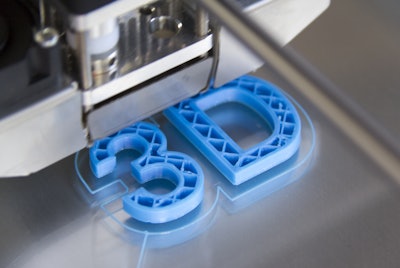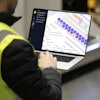
Intellectual property (IP) lies at the heart of every business, ensuring innovation stays in the right hands. In the realm of 3D printing, also known as additive manufacturing, this principle is more crucial than ever. By decentralizing manufacturing and leveraging external service bureaus, companies can undoubtedly deliver products faster and tailor offerings more precisely to market demands. However, due to both its quick, cost-effective, and precise manufacturing process, 3D printing is a fine target for counterfeiting. The digital design files used in this industry also facilitate their widespreadness and its associated misuses. To effectively protect innovators, a pressing challenge needs to be answered: protecting intellectual property within file transportation.
The IP security challenge in 3D printing
3D printing relies heavily on digital files, which encapsulate the blueprint for each object. 3D model files are converted into 3D printable files, instructing the printer on how to create the object. The exchange of this sensitive production data across diverse sites—both internally and with external partners—introduces vulnerabilities. If someone gains control of the digital file, they can 3D print as many copies as they like, effectively "owning" the object. Without robust security measures, these files could be intercepted, copied, or altered, which could finally result in the illegal distribution or selling of the production file, undermining the original designer's ownership. Beyond creative and monetary loss, an IP security breach could also deeply affect the end-product without the necessary quality control. This mandatory process aims at guaranteeing production consistency, accuracy and the product’s structural integrity.
Failure to comply with adapted quality control may cause serious repercussions on the legitimate owner’s brand reputation, but also creates serious safety risks and could end up creating life-threatening incidents, especially in industries with strict standards, such as aeronautics or healthcare.
Designers, therefore, systematically need to share their designs for 3D printing securely as a way to produce their creations and ensure the safety of others.
The need for a secure solution in decentral manufacturing
The ideal solution to address these challenges must encompass several key components:
· Non-disclosure agreements (NDAs): Implementing NDAs with all parties involved in the production process ensures legal protection and confidentiality, reducing the risk of intentional or unintentional disclosure of sensitive information.
· Access control: Ensuring that only authorized individuals or entities have access to the design files at each stage of the production process is crucial. This involves stringent authentication measures and permissions management.
· Encryption: Transforming production files into unreadable code ensures that even if files are intercepted, they remain useless to unauthorized users.
· Traceability: Logging of every interaction with the digital file, from creation to final production, provides a detailed audit trail. This includes recording production parameters to maintain the integrity of the manufacturing process.
· Secure transfer: Encrypted transfer protocols must be used when sending production files between different locations or partners, preventing unauthorized interception and alteration during transit.
Pay-per-print solutions
Encrypting production files and streaming them directly to the printer ensures that the production file cannot be kept or misused. This method allows for printing only the requested amount, e.g. enabling you to release a part only for one print. Subsequently, it allows companies and designers to even sell their parts as digital files and earn per print under a license.
The future of decentralized, on-demand production
As companies increasingly adopt distributed manufacturing models, the need for secure and efficient IP handling becomes paramount. Manufacturers can leverage the benefits of 3D printing—such as reduced lead times, cost savings, and customization—without compromising their intellectual property.
















![Pros To Know 2026 [color]](https://img.sdcexec.com/mindful/acbm/workspaces/default/uploads/2025/08/prostoknow-2026-color.mduFvhpgMk.png?ar=16%3A9&auto=format%2Ccompress&bg=fff&fill-color=fff&fit=fill&h=135&q=70&w=240)

